Question of the Week: March 15, 2018
“Neil, what is the white tree that’s been blooming for the past two weeks everywhere I’ve been driving?”
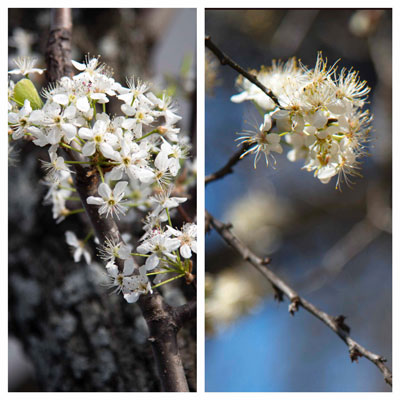
Photo: Cluster of Bradford pear flowers against its trunk on left. Sweet-smelling Mexican plum blooms against the blue sky on right.
Bradford ornamental pear
My bet is that you’re asking about Bradford pear or, in a more global sense, all the ornamental pears including Aristocrat, Cleveland and even wild Callery pears.

Photo: Bradford pear blooms mightily alongside saucer magnolia in DFW park planting.
They started blooming a little later this year because of the cold weeks of late February, and they’ve been pretty spectacular, to the point of making neighborhoods look like they’re going through snowstorms.
The downsides of ornamental pears…
As beautiful as they are, there are some real negatives to this group of showy trees – and it’s not just because they don’t smell very good while they’re blooming. Consider these:
• Extremely brittle branches with narrow branch angles – they are likely to break without warning in wind or ice storms, and they’ll do so at a comparatively young age (10 or 15 years).
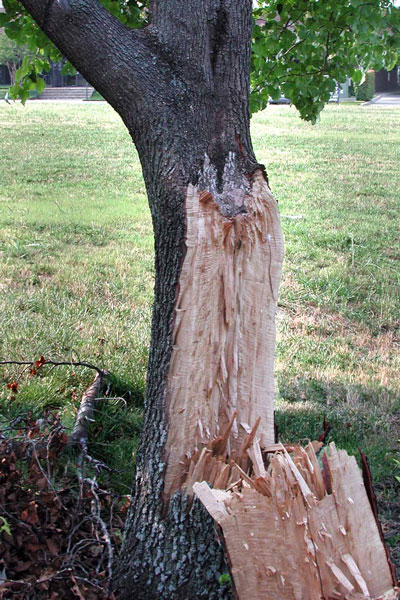
Photo: Branch angles of Bradford, other ornamental pears are notoriously weak. This kind of splitting usually happens after 10 to 15 years. There is no way to save trees that look like this.
• Susceptible to cotton root rot. This soil-borne fungus kills many species of plants, but apples and pears are among its favorite hosts. To make matters worse, it usually waits 5 or 10 years to strike, so it kills trees just as they’re getting mature and beautiful. There is no prevention or cure, other than to plant some other type of tree.
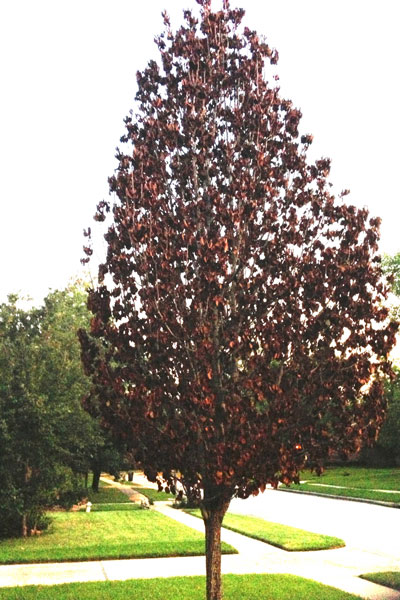
Bradford pear that has succumbed suddenly to cotton root rot fungus. There is no prevention or cure.
• Invasive. As the years have passed we’ve begun to see seedlings of Callery pear, the rootstock of all the ornamental pears, germinating in creekbeds and wetlands. You don’t really notice them until they all come into bloom at the same time in March.
All things considered, this is not a great tree to be planting. That’s a shame, too, because it really is a pretty one. But “pretty” doesn’t always translate to “desirable.”
Side note about Bartlett pear…
Some folks get Bartlett pears confused with Bradford pear. Respectively, one is edible and one is not. But one thing they both share in common is that we really shouldn’t be planting either in Texas. Bartlett pear is highly susceptible to the bacterial disease known as fire blight. Grow the variety Orient instead.
Mexican plum
This is a delightful native plum species, Prunus mexicana. It grows wild over a wide range of Texas, most commonly at the edges of oak woodlands.
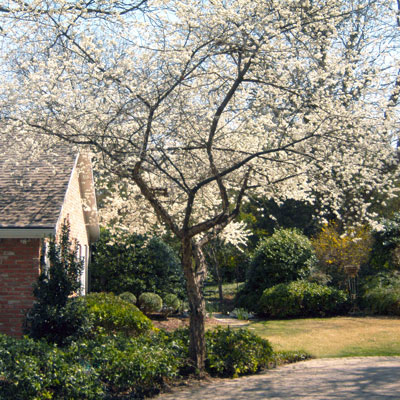
Photo: Mexican plum is blooming this week in the Sperry home landscape.
It’s a small spreading to rounded tree to 20 feet tall and wide. It’s noted for its craggy bark that sheds in plates, also for its comparatively large and coarse-textured plum leaves. The fruit are 1-inch in diameter, ripening in fall in shades of plum-purple and red with a blue sheen. They’re not much good for fresh eating, but they’re fabulous in jellies!
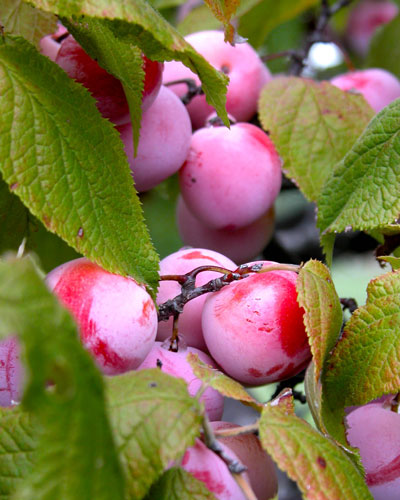
Photo: Mexican plums are favorites of birds and other wildlife. They’re also fantastic in jellies!
But one of the big selling points of Mexican plum is its spring bloom. The small flowers are pure white and deliciously fragrant. They’re among the first blossoms to open in the Texas landscape, and they remain in flower for 15 to 20 days, longer than most other species.
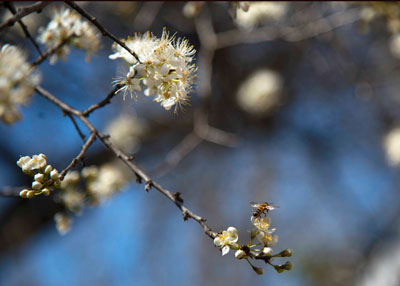
Photo: Bee finds delight in a Mexican plum flower.
You’re seeing Mexican plum used more and more often in finer Texas landscape designs. It’s resistant to most common plum problems, it’s dependable, and it lends a great look to its surroundings.
Short summary: If you want a white-flowering deciduous shade tree, this might be the very best option for big parts of Texas. (White-flowering redbud is just about as good, but much harder to find.)
